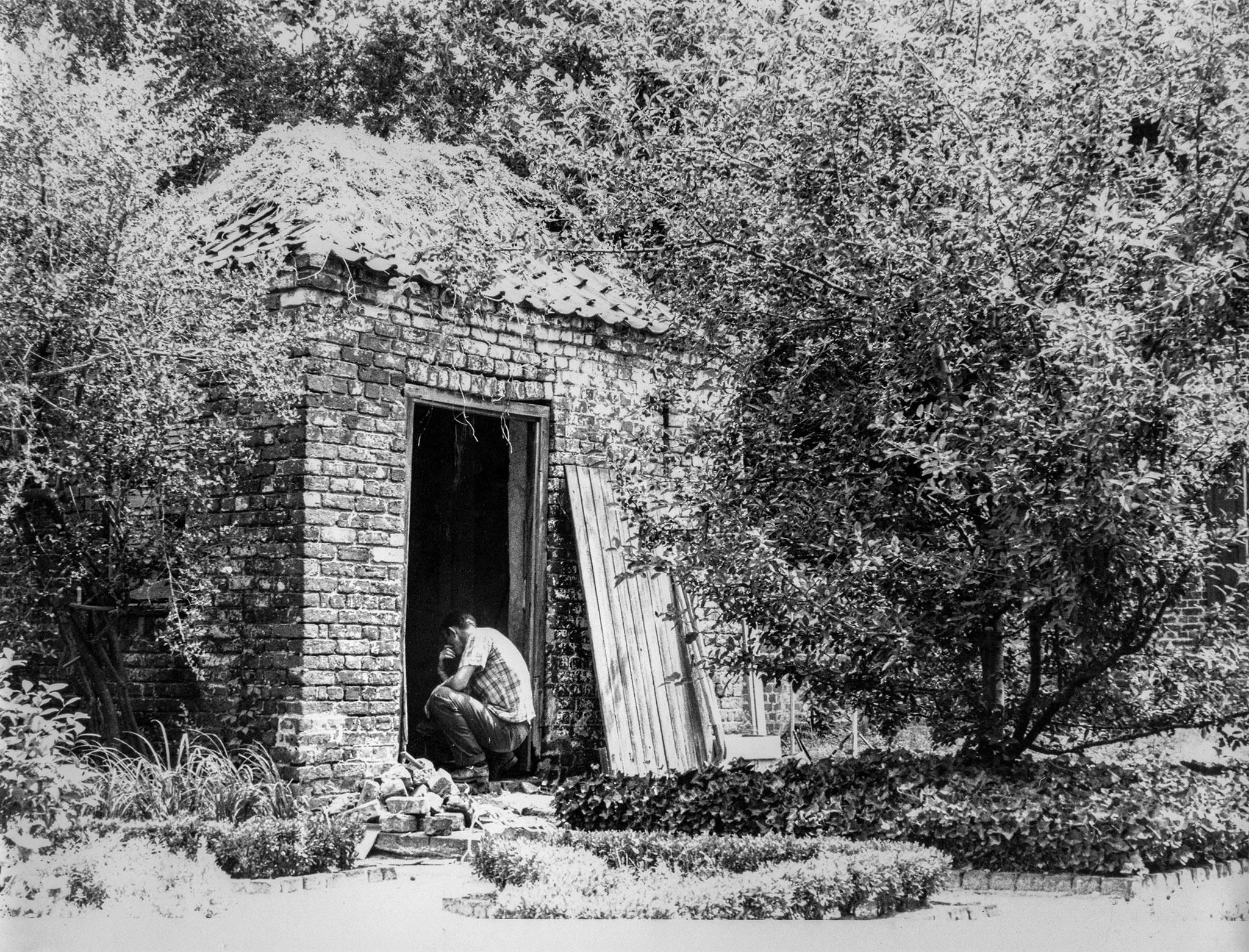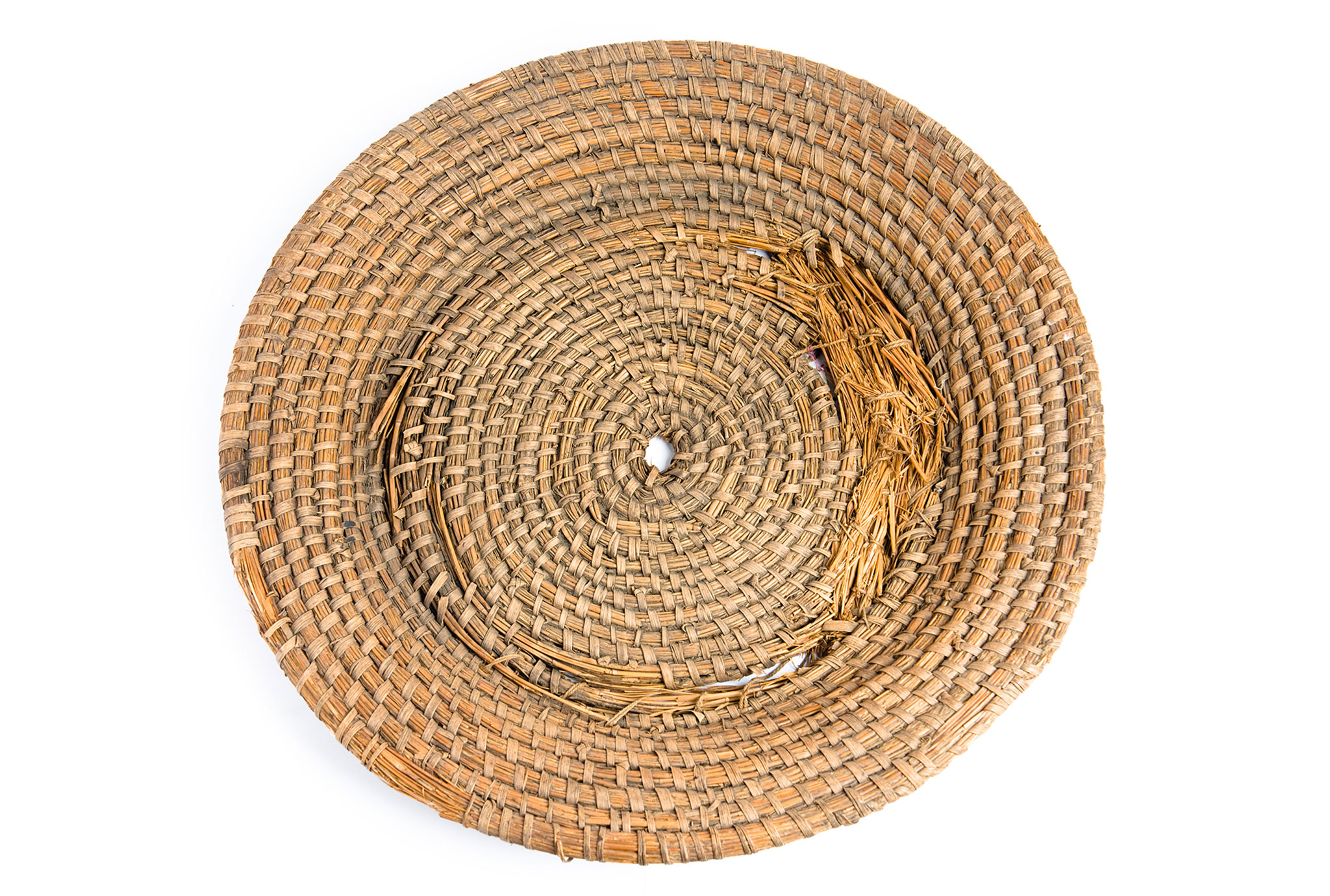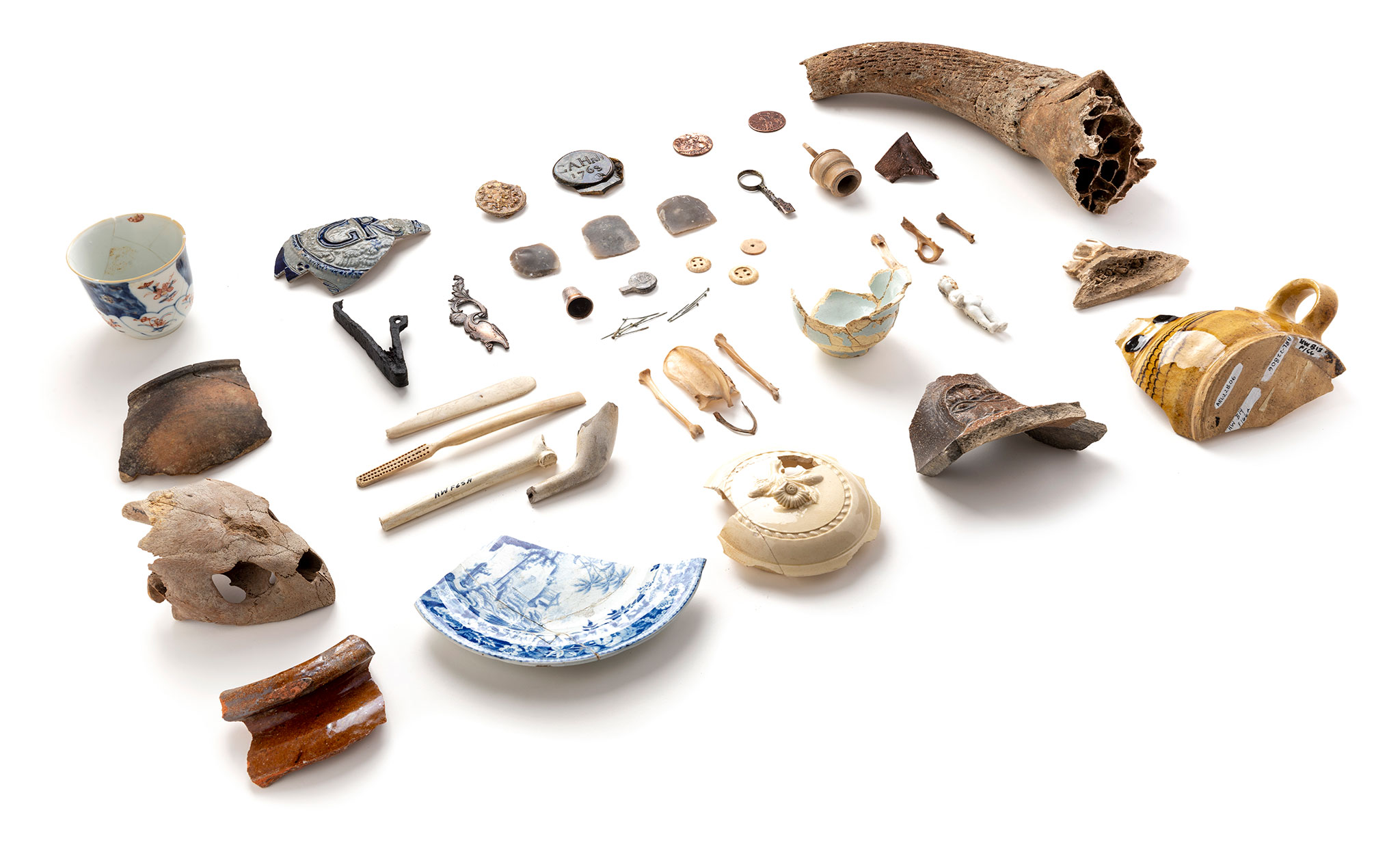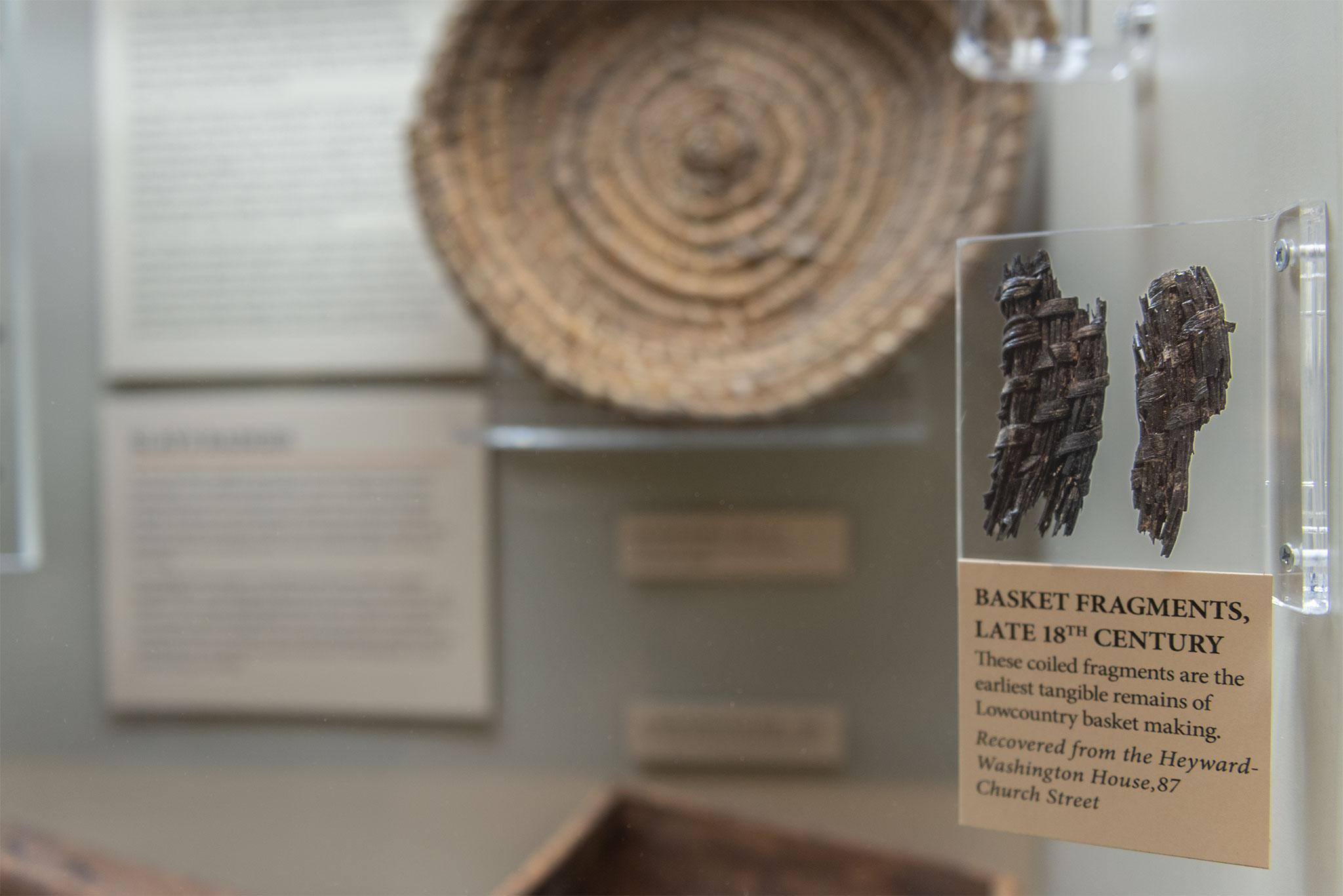Sea Grass Basket Fragments from the Heyward-Washington House
Sea grass basket fragments made of rush and palmetto, late 18th century, recovered from the Heyward-Washington House privy.
Archaeological studies are built on the identification and quantification of groups of artifacts. The Museum’s archaeological collections alone include over two million fragments. Charleston sites, in particular, produce large assemblages of material, including ceramics, glass, nails, bricks, buttons, bones, and other mundane objects, either discarded or lost during the course of daily life. Rarely do we find organic items, such as fabric, leather, or wood, unless preservation conditions are pristine.
From the excavations at the Museum’s Heyward-Washington House, we are fortunate to have two single organic artifacts that are both rare and remarkably preserved. These are charred fragments of a coiled basket, retrieved from the lowest level of the privy.
Privy at the Heyward-Washington House during excavation, 1976
The Museum’s Heyward-Washington House was the site of the first professional excavation in Charleston, conducted in the 1970s by Dr. Elaine Herold. She excavated the kitchen cellar, the workyard between the kitchen and the stable, the driveway, the front of the house, and the privy. The privy was excavated in ten levels, with significant artifact deposits dating to the second quarter of the nineteenth century, and to the Revolutionary era. The earliest artifacts are associated with the Heyward family, and include many fragments of creamware dinner wares and porcelain tea wares, wine bottles and glasses, colonoware pottery, and the two sea grass basket fragments made by enslaved Africans.
Fanner Basket, 19th century, SC
The coiled fragments were identified by Mount Pleasant basket makers and by Dale Rosengarten, who featured them in her book, Row upon Row, now in its 4th printing. Made of rush and sewn with palmetto strips, these chosen materials indicate it was a heavy work basket, more than likely a rice fanner. Fanners are wide, shallow baskets once used by enslaved people for cleaning threshed rice. The rough rice would have been placed in the fanner, rotated so the lighter chaff moved to the outside, and then tossed up so the wind blew away the light chaff, while the heavier rice fell into the basket.
Archaeological excavations at the museum’s Heyward-Washington House have produced a remarkable assemblage of everyday objects, reflecting the lives of those who resided and worked on the property from the early eighteenth century through the late nineteenth century.
Based on other artifacts in the privy fill at the same level, these fragments were discarded in the 1780s, making them the earliest known example of the Lowcountry sea grass basket tradition, one still practiced by African American basket makers today.
Basket Fragments on display in the Lowcountry History Hall
This rare find speaks to the careful excavation of the Heyward-Washington privy and to the role of archaeology in the broader study of African American life in Charleston. They are on permanent display in our Lowcountry gallery, and highlighted for our 250th anniversary.






